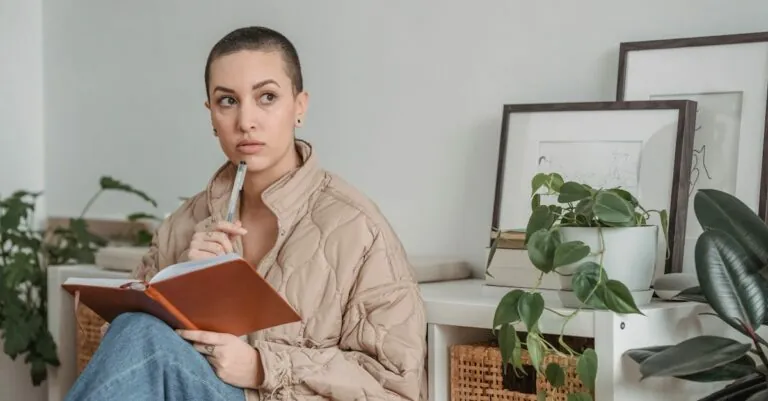Table of Contents
ToggleQuilting isn’t just a hobby; it’s a vibrant lifestyle that stitches together creativity, community, and a dash of cozy charm. Imagine transforming a pile of fabric scraps into a masterpiece that tells a story—your story. Whether you’re a seasoned quilter or just dipping your toes into the world of fabric and thread, inspiration is everywhere, waiting to be uncovered.
From quirky fabric choices to innovative patterns, the quilting lifestyle offers endless possibilities. It’s about more than just creating beautiful quilts; it’s about embracing a mindset of creativity and connection. So grab your favorite cup of tea and settle in, because this journey through the colorful world of quilting will spark your imagination and maybe even make you laugh along the way. After all, who knew that a little fabric and thread could lead to a life so beautifully stitched together?
The Essence of Quilting Lifestyle Inspiration
Quilting embodies a rich tapestry of culture, creativity, and community. This art form transcends mere fabric manipulation; it symbolizes personal narratives and shared experiences. Participants often find joy in transforming remnants into cherished creations. Many quilters express their identities through color choices, patterns, and techniques, showcasing unique styles.
Community plays a crucial role in the quilting journey. Quilting bees and local guilds offer spaces for social interaction, skill development, and friendship. Through these gatherings, individuals bond over common interests while exchanging tips and support. Workshops further enhance skills and inspire new ideas, allowing quilters to explore different aspects of their craft.
Connection to history enhances the quilting experience. Each design can tell a story, bridging generations through shared techniques and heritage. Many historical patterns retain significance, reflecting the lives and values of those who came before. Quilting can thus serve as a reminder of familial bonds and cultural narratives.
Moreover, quilting fosters a mindset of creativity and innovation. Quilters experiment with different fabrics and techniques, pushing boundaries and inspiring one another. The process often invites individuals to step outside their comfort zones, experimenting with contemporary styles alongside traditional methods.
Sustainability also finds its place within the quilting lifestyle. Many enthusiasts prioritize using recycled materials, contributing to eco-friendly practices. This focus on sustainability highlights the importance of mindful crafting, encouraging quilters to cherish resources while creating beautiful pieces.
Ultimately, the essence of quilting lifestyle inspiration captures the joy of creation, the warmth of community, and the connection to heritage, all intertwined in a vibrant, engaging experience.
Embracing the Art of Quilting
Quilting embodies creativity, individuality, and connection. It invites participants to explore diverse techniques and styles.
Traditional Techniques
Traditional quilting techniques have stood the test of time. Hand-stitched quilts showcase a dedication to craftsmanship and patience. Patterns like Log Cabin and Flying Geese carry historical significance, telling stories through fabric. Many quilters practice these methods to connect with their roots while honoring heritage. Piecing together fabric pieces fosters a sense of continuity and tradition, uniting generations in shared experiences. Techniques such as hand quilting offer a personal touch and celebrate the uniqueness of each quilt.
Modern Innovations
Modern innovations in quilting inspire fresh creativity. Incorporating technology, machines allow for precise designs and intricate stitching patterns. Many quilters explore techniques like improvisational piecing, breaking from conventions to create unique art pieces. Digital fabric printing enables personalized designs, transforming original artwork into textiles. Use of unconventional materials, such as recycled fabrics and mixed media, promotes sustainability and eco-friendly practices. Embracing these innovations opens new doors for expression in the quilting community.
Integrating Quilting into Everyday Life
Quilting seamlessly fits into daily routines, enriching lives through creativity and connection. It becomes more than a hobby; it evolves into a lifestyle embraced by many.
Quilting as a Therapeutic Practice
Quilting provides a calming effect, allowing individuals to disconnect from stress. Engaging with fabric fosters mindfulness, focusing attention on the tactile experience of stitching. The rhythmic motion of sewing can quiet the mind, granting an escape from daily pressures. Research shows that crafting can reduce anxiety and enhance overall well-being. Many quilters find peace in patterns, immersing themselves in a world of color and texture. By creating something tangible, they often experience a sense of accomplishment.
Community and Social Connections
Quilting builds a strong sense of community among enthusiasts. Local guilds act as support networks, bringing together individuals with shared passions. By participating in quilting bees, friendships often flourish, creating lasting bonds. Workshops and classes provide opportunities for skill enhancement while encouraging collaboration. Events like quilt shows showcase collective creativity, celebrating unique voices and stories. Engaging with fellow quilters creates a sense of belonging, transforming individual pursuits into communal celebrations.
Creative Expression Through Quilting
Quilting serves as a powerful medium for creative expression, allowing individuals to transform fabric into personal narratives. Each quilt offers a unique canvas where stories unfold through thoughtful designs.
Designing Unique Patterns
Designing unique patterns showcases individuality and innovation. Quilters often start with a vision, translating their ideas into intricate layouts. Explorations of traditional motifs and contemporary styles result in distinctive creations. Popular techniques like patchwork, applique, and foundation piecing enable diverse expressions. Experimenting with scale and arrangement can lead to striking results that captivate viewers. Each stitch connects the design to the maker’s personality, making every quilt a personal statement.
Color and Fabric Choices
Color and fabric choices play a significant role in quilting. They establish the mood and impact of the entire piece. Selecting fabrics involves considering textures, prints, and colors that resonate with the quilter’s intentions. Combinations of warm and cool colors create different feelings, while tonal variations add depth. Utilizing various fabric types, such as cotton, linen, or recycled materials, enriches the quilt’s character. Each choice contributes to a collective vision that reflects the quilter’s style and enhances artistic expression.
Sustainable Quilting Practices
Sustainable quilting practices embrace eco-conscious choices that enhance creativity while respecting the environment. Quilters can make a difference through mindful selections and innovative techniques.
Eco-Friendly Materials
Organic cotton, bamboo, and linen represent sustainable alternatives to conventional fabrics. These materials often avoid harmful chemicals and reduce environmental toxicity. Quilters increasingly prioritize natural dyes and low-impact printing methods, minimizing waste and pollution. Utilizing fabrics from certified sustainable sources supports ethical production processes. Choosing recycled materials, such as pre-loved fabrics, not only reduces waste but also adds a unique character to each quilt. Quilters can contribute to a healthier planet through these thoughtful fabric choices.
Upcycling and Reusing Fabrics
Upcycling involves giving new life to old fabrics, promoting sustainability while fostering creativity. Many quilters reclaim garments or linens that may otherwise end up in landfills. This practice encourages resourcefulness and innovation, as each piece brings its own story to the quilt. The beauty of upcycled fabrics lies in their diversity, often featuring various textures and colors. Committed quilters can mix and match remnants from other projects, creating one-of-a-kind designs that reflect their personal journey. By reusing these materials, quilters not only lessen environmental impact but also embrace uniqueness in their craft.
Quilting embodies a rich tapestry of creativity and connection that resonates deeply with those who engage in it. It offers a unique way to express individuality while fostering relationships within a supportive community. As quilters navigate their journeys through fabric and thread, they not only create beautiful pieces but also weave together stories that span generations.
The blend of traditional techniques and modern innovations ensures that quilting remains a dynamic and evolving art form. Embracing sustainable practices further enhances its significance, allowing quilters to honor the environment while exploring their craft. Ultimately, the quilting lifestyle inspires a sense of purpose and fulfillment that enriches both personal lives and communal bonds.







